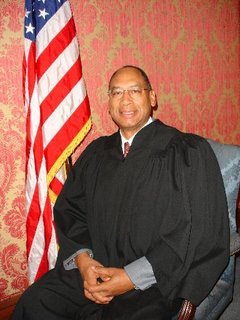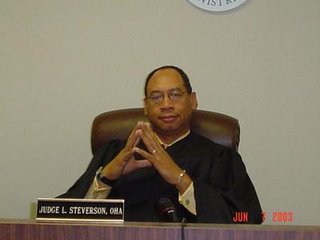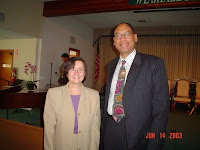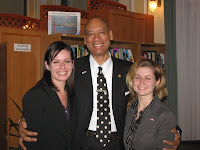Clan STEVERSON pre-dates William the Conquer.
(Sub libertate quietum){Rest under liberty}


ORIGIN OF NAME
The ruins of tall craggy towers and castles are still scattered along the Scottish/English border, home to the notable surname STEVERSON. This clan's ancient history is closely woven into the fabric of the border chronicles.
Through diligent research among some of the most ancient manuscripts, such as, the Exchequer Rolls of Scotland, the Inquisitio, the Ragman Rolls, the Domesday Book, baptismals, parish records, tax records and cartularies researchers have found the first record of the name STEVERSON, in Northumberland where they were seated from very ancient times, some say before the Norman Conquest in 1066 of William the Conqueror.
The name, STEVERSON, occurred in many references, and from time to time, it was spelt Stevenson, Stephenson, Stephinson, Stevenston, Steenson, Stenson, Steinson, Stinson, as well as other ways. Scribes and church officials spelt the name as it sounded, and frequently the spelling changed even during the person's own lifetime.
The family name STEVERSON is believed to be descended from the Boernicians, an ancient founding race of the English/Scottish border dating from about th eyear 400 A. D.. The border was also home to Clans, such as, the Sturdy Armstrongs, the Gallant Grahams, the Saucy Scotts, the Angry Kerrs, the Bells, the Nixons, the Famous Dicksons, the Bold Rutherfords, and the Pudding Somervilles.
CLAN WARS.
From these war-like clans of the border the surname STEVERSON was found in Northumberland, where they were anciently seated at Knaresdale Hall, and at Newcastle on Tyne. By 1150 they had moved north to Scottland in the parish of Newlands in Peebleshire, where Stevene Steverson rendered homage, along with his kinsman, John, to King Edward I of England on his brief conquest of Scotland in 1296. The name north and south of the border at this time was spelled with a "ph" and "v", alternately. Branches of the name appeared in Scotland in Brechin, Glasgow, Edinburg, and Irvine, and south of the border in Middlesex, Lincoln, Derbyshire, and Cumberland. Sir William Stevenson was Lord Mayor of London in 1764. George Stephenson, the inventor of the locomotive, was of Scottish parentage; but, the main stem of the family remained in the north east of England and southern Scotland. In Scotland there was a small group in the Glasgow and Pestwick area which corrupted he name of Stenson and Steenson and Steinson form about the year 1455 onwards. Their present family seats are at Bolton Old Hall, Westow, Hassop, Hall, Park Grange, Playford Mount, and Braidwood. Notable among the family name during the early history was Robert Louis Balfour Stevenson, distinguished author, born in Edinburg, whose works include "Treasure Island", "Kidnapped", and many more, 1850-1894.
Clan fueds became so intense that in 1246 A.D., six Chiefs from the Scottish side and six from the English side met at Carlisle and created a set of laws acceptable to the border territory and its people. These were unlike any laws prevailing in England or Scotland or, for that matter, anywhere else in the world. For refusal of assistance when called,a person could be hanged on the instant, without a trial. When clans were on the "hot trod" to recover stolen property (from which we get the modern expression "hot to trot"), they were protected from almost all eventualities.
When the Crown of England and Scotland were united under James VI of Scotland in 1603 the Border Clans were dispersed to England, northern Scotland and to Ireland. Some were banished directly to the (American) Colonies.
CLAN LOCATION.
In Ireland they were granted lands previously held the Catholic Irish. They signed as "Undertaking" to remain Protestant and faith to the Crown. In Ireland the name assumed the variance of Steenson and Stinson, and they settled in County Limerick, and were prominent patrons of Gaelic literature.
The New World beckoned settlers from Ireland (who would come to be known as the Scotch/Irish), as well as from the Old Country. The sailed aboard the armada of sailing ships known as the "White Sails" which plied the stormy Atlantic. Some called them, less romantically, the "coffin ships". Among the early settlers bearing the STEVERSON surname who came to North America were: Joseph Stephenson, who settled in Argentia, Newfoundland, in 1730; William and Mathew Stevenson, who settled in Harbour Grace, Newfoundland, in 1760; Andrew Stevenson, who settled in Charlestown, Mass., in 1630; Richard Stevenson, who settled in the Barbados in 1654; Robert Stevenson, who settled in Boston, Mass., in 1763; Christian and Anne Stephenson, who settled in Virginia, in 1637; Thomas Stephenson, who settled in Maryland , in 1774; John Steenson, who settled in Charles Town, S.C. in 1767; David, Hugh, James, John, Robert, Thomas, and William Stinson , who all arrived in Pennsylvania from 1844 to 1857.
In America these pioneers became the nucleus of the first settlements from Maine to the Cumberland Gap, and from Nova Scotia to the Prairies.
In more recent times, many of the family named STEVERSON have achieved prominence: among them were; Sir Francis Stephenson; Edgar Stephenson, Archdeacon; Professor Gordon Stephenson, Architect; Colonel Sir Henry Stephenson; Jim Stephenson, Recorder; Sir Percy Stephenson; Sir William Stephenson, Canadian Author; Dr. Alan Stevenson, Researcher; Sir Aubrey Stevenson; Dr. Derek Stevenson; Dame Hilda Stevenson; Air Marshall Leigh Stevenson; Sir Matthew Stevenson; Senator Ted Stevens: Sir Ralph Stevenson; Todd Anthony Steverson, professional baseball player for Detroit and San Diego; Judge London Steverson; Justin Adlai Steverson, professional bodybuilder and stage actor; Dame Sarah Steverson; London EuGene Livingston Steverson-II; and Adlai E. Stevenson, U.S. Presidential candidate.
Judge London Steverson
London Eugene Livingston Steverson (born March 13, 1947) was one of the first two African Americans to graduate from the United States Coast Guard Academy in 1968. Later, as chief of the newly formed Minority Recruiting Section of the United States Coast Guard (USCG), he was charged with desegregating the Coast Guard Academy by recruiting minority candidates. He retired from the Coast Guard in 1988 and in 1990 was appointed to the bench as a Federal Administrative Law Judge with the Office of Hearings and Appeals, Social Security Administration.
Early Life and Education
Steverson was born and raised in Millington, Tennessee, the oldest of three children of Jerome and Ruby Steverson. At the age of 5 he was enrolled in the E. A. Harrold elementary school in a segregated school system. He later attended the all black Woodstock High School in Memphis, Tennessee, graduating valedictorian.
A Presidential Executive Order issued by President Truman had desegregated the armed forces in 1948,[1] but the service academies were lagging in officer recruiting. President Kennedy specifically challenged the United States Coast Guard Academy to tender appointments to Black high school students. London Steverson was one of the Black student to be offered such an appointment, and when he accepted the opportunity to be part of the class of 1968, he became the second African American to enter the previously all-white military academy. On June 4, 1968 Steverson graduated from the Coast Guard Academy with a BS degree in Engineering and a commission as an ensign in the U.S. Coast Guard.
In 1974, while still a member of the Coast Guard, Steverson entered The National Law Center of The George Washington University and graduated in 1977 with a Juris Doctor of Laws Degree.
USCG Assignments.
Steverson's first duty assignment out of the Academy was in Antarctic research logistical support. In July 1968 he reported aboard the Coast Guard Cutter (CGC) Glacier [2] (WAGB-4), an icebreaker operating under the control of the U.S. Navy, and served as a deck watch officer and head of the Marine Science Department. He traveled to Antarctica during two patrols from July 1968 to August 1969, supporting the research operations of the National Science Foundation's Antarctic Research Project in and around McMurdo Station. During the 1969 patrol the CGC Glacier responded to an international distress call from the Argentine icebreaker General SanMartin, which they freed.
He received another military assignment from 1970 to 1972 in Juneau, Alaska as a Search and Rescue Officer. Before being certified as an Operations Duty Officer, it was necessary to become thoroughly familiar with the geography and topography of the Alaskan remote sites. Along with his office mate, Ltjg Herbert Claiborne "Bertie" Pell, the son of Rhode Island Senator Claiborne Pell, Steverson was sent on a familiarization tour of Coast Guard, Navy and Air Force bases. The bases visited were Base Kodiak, Base Adak Island, and Attu Island, in the Aleutian Islands.[3]
Steverson was the Duty Officer on September 4, 1971 when an emergency call was received that an Alaska Airlines Boeing 727 airline passenger plane was overdue at Juneau airport. This was a Saturday and the weather was foggy with drizzling rain. Visibility was less than one-quarter mile. The 727 was en route to Seattle, Washington from Anchorage, Alaska with a scheduled stop in Juneau. There were 109 people on board and there were no survivors. Steverson received the initial alert message and began the coordination of the search and rescue effort. In a matter of hours the wreckage from the plane, with no survivors, was located on the side of a mountain about five miles from the airport. For several weeks the body parts were collected and reassembled in a staging area in the National Guard Armory only a few blocks from the Search and Rescue Center where Steverson first received the distress broadcast.[4]. Later a full investigation with the National Transportation Safety Board determined that the cause of the accident was equipment failure.[5]
Another noteworthy item is Steverson's involvement as an Operations Officer during the seizure of two Russian fishing vessels, the Kolevan and the Lamut for violating an international agreement prohibiting foreign vessels from fishing in United States territorial waters. The initial attempts at seizing the Russian vessels almost precipitated an international incident when the Russian vessels refused to proceed to a U. S. port, and instead sailed toward the Kamchatka Peninsula. Russian MIG fighter planes were scrambled, as well as American fighter planes from Elmendorf Air Force Base before the Russian vessels changed course and steamed back
Read More
Labels: First Black Cadets.



























.JPG)

















.JPG)





